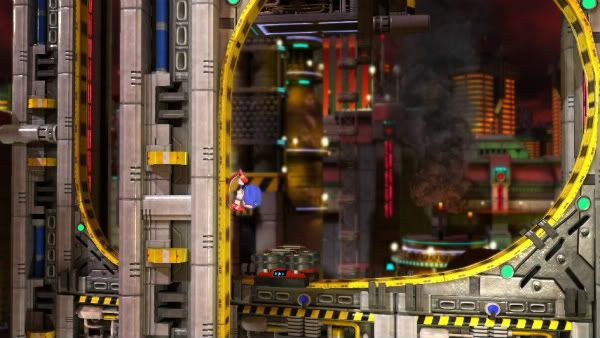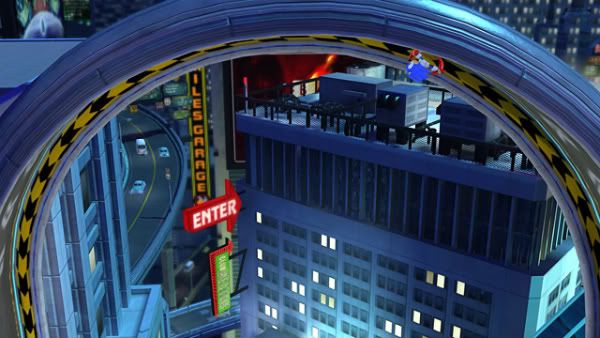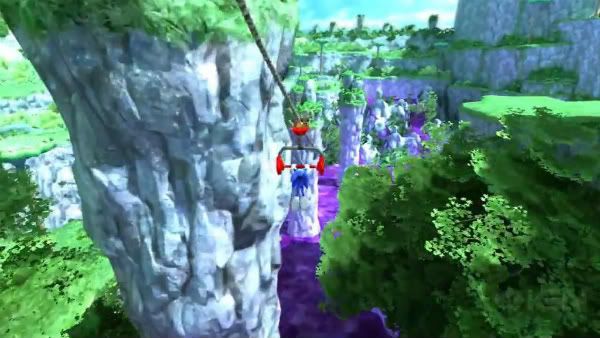This post has not been edited by the GamesBeat staff. Opinions by GamesBeat community writers do not necessarily reflect those of the staff.

Sky Sanctuary is better than I remember it.
The Sonic & Knuckles stage is reimagined as an ivory mausoleum in Sonic Generations, the video-game equivalent of a greatest hits album for Sega’s mascot. I bounce across clouds to dreamlike music until I reach the section where I circle a collapsing tower and jump into the Death Egg. I reach the top, and nothing is there except for a goal ring.
What a rip off.
Despite that — all aficionados nitpick remastered classics — Sky Sanctuary shows just as much about what the series is about as it did a decade ago. The emphasis of Generations is on the different playstyles of the simple, classic Sonic and the hedgehog of today. It also shows us, however, something hinted at in Sonic Colors that we haven’t seen for some time: the world and art style that was synonymous with Sega's mascot in the Genesis days.
The early titles had a unique look that separated them from their competition, with their half pipes and quadrangle-lined walls. The franchise established a preference for green vistas, industrial areas, and pinball wonderlands early on, and these motifs continued until 1999. Then Sonic Adventure appeared, and the Blue Blur’s "realism period" began.

The stages now took place in lifelike canyons, cities, and military bases. Speed Highway, the game's contribution to Generations, has Sonic racing down buildings in a modern metropolis. Sonic Adventure 2’s City Escape has him running around at the speed of sound in San Francisco. Most of the modern games use this approach except for Sonic Heroes.
The switch in locales is drastic but understandable. These games appeared on the Sega Dreamcast, the first console with the power to do more with polygons than create crude blocks and figures. Everyone was in a race to create the most lifelike graphics, and seeing an anthropomorphic hedgehog blast through these landscapes was a spectacle, even if it made no sense.
Don’t get me wrong: This art direction isn’t bad. Generations was the first time I tried out the Rooftop Run stage from Sonic Unleashed, and soaring over a gorgeous Italian town was great. But it didn’t feel like Sonic was in his own world anymore. In comparison, the Mario games’ Mushroom Kingdom had no real geography, but it had locals that reappeared from game to game, and everyone looked like they belonged in it.
The current Sonic lives in a Roger Rabbit-hodgepodge, where cartoon characters and normal humans coexist in a clash of styles. You could fight red Eggman-shaped robots in one game and mechs straight out of Metal Gear Solid in another. Fans probably would have discussed this more if we didn’t have buggy gameplay and werehogs to complain about.
 Last year’s Sonic Colors saw our hero travel to an intergalactic space park, which let the developers be more creative with the level design. Generations takes the Planet Wisp stage from the Nintendo Wii title, and it serves as a bookmark to the Genesis era: The alien-like pastures that lead into an oversized construction site would fit in with any of the old-school zones.
Last year’s Sonic Colors saw our hero travel to an intergalactic space park, which let the developers be more creative with the level design. Generations takes the Planet Wisp stage from the Nintendo Wii title, and it serves as a bookmark to the Genesis era: The alien-like pastures that lead into an oversized construction site would fit in with any of the old-school zones.
Likewise, Generations’ renditions of the early game’s levels are great. I’d love to see future sequels go in the direction of the Chemical Plant from Sonic the Hedgehog 2, where bold colors dominate the landscape and there’s no reason for this place to exist other than it would be cool to go through in a video game. Both Generations and Colors also benefit from downplaying the overcooked storylines of recent games and focusing on the simple conflict between Dr. Eggman and a Sonic with swagger.
As graphics become more and more realistic, the best way to make something stand out is through a unique look. I hope Sega takes this blast through memory lane to heart and makes Sonic's next outing feel as distinct as when he first started out. That will show fans that the hedgehog is back as much as avoiding past mistakes will.
Now if only Sega will stop making Knuckles the Echidna look like such a joke.
